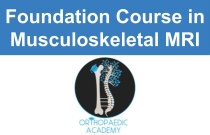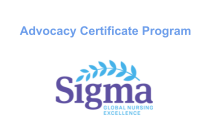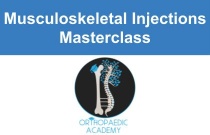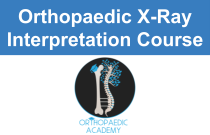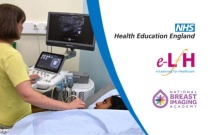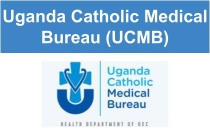New Test Max
Mr WCEA Administrator
supports scalable and sustainable training and capacity-building across 100+ countries in global health and humanitarian programs by leveraging digital transformation and digital learning.
Foundation Course in Musculoskeletal MRI
Dr. Nicola Evans, Mr. Kashif Ahmed Memon, Mr Vilas Sadekar, Abdullah Hanoun, Parag Garg, Sriram Srinivasan
This course will provide attendees with an understanding of normal and pathological appearance in orthopaedic MRI radiology in adult and paediatric cases. Delegates will leave the course with the knowledge to describe normal and abnormal MRI images for the upper limb, lower limb and the spine, and how to link these with ortho....
Narrative Shifts: Reshaping Dialogues in Suicide Prevention
Dr. Delali Fiagbe, Seguwa Agroh. and Professor Erik Hahn
Join us for the insightful webinar, Narrative Shifts: Reshaping Dialogues in Suicide Prevention, where we will delve into the critical aspects of suicide prevention in Ghana. This session aims to inform and educate participants on the existing laws and regulations, including the Criminal Offenses Act and the Mental Health Act, e....
Advocacy Certificate Program
Wanda Montalvo
4.75 Hours
This certificate program aims to develop nurses’ knowledge and skills in advocating for themselves as well as at the organizational, community, regional, or global levels. The future of nursing is informed by the lived experiences of nurses, educational preparation, and personal connection to social and professional issues that....
Musculoskeletal Injections Masterclass
Firas Arnaout and Mahmoud Massoud
The Musculoskeletal Injections Masterclass is a comprehensive course designed to provide in-depth knowledge and hands-on experience in the field of musculoskeletal injections. This masterclass covers a wide range of injection techniques, from basic to advanced, ensuring participants are equipped with the skills and knowledge to....
Orthopaedic X-Ray Interpretation Course
Justin Mooteeram, David Hughes, Piyush V. Gavai, Mr. Akhil Kapoor, Dr. Nicola Evans, Aabid Sanaullah, Sriram Srinivasan, Mr. Mohammed As- Sultany, and Emad Samuel Boles Saweeres,
This continuing professional development program has been CPD-approved by the prestigious Royal College of Surgeons of Edinburgh. The course is designed to enhance attendees’ comprehension of both normal and pathological presentations in orthopaedic radiology. Upon completion of the course, participants will possess the ex....
Management of Neurodegenerative Disorders in Adults
Timilehin Seyi Ogunsakin
Neurodegenerative disorders (NDDs) are a broad range of pathological conditions which target the neurons, creating problems in movements and mental functions. The NDDs have drawn a lot of attention among the diseases because of their complexity in causes and symptoms, lack of proper effective treatment(s), no report of irreversi....
Paediatric Trauma & Burns: Prevention and Parental First Aid
Dr Elaine Volschenk
Prevention of paediatric trauma and burns is a thoroughly researched subject and as clinicians, we are all aware of the principles surrounding the subject, but unfortunately, most families in South Africa don’t have the necessary first aid training to assist the child before they get to the hospital. This presentation will revie....
Control of NCDs in Primary Health Care: An eco-Bio-Psycho-Socio- Spiritual Approach
Dr. Mercy Wanjala
This presentation would aim to cover the multidimensional aspects of managing Non-Communicable Diseases (NCDs) in a primary healthcare setting, acknowledging the complexity of factors that influence health outcomes.
Normal Breast and Axilla on Ultrasound
Dr Nikhil Birdi, and Carol Ellen Holmes
This session discusses the anatomy of the normal breast and axilla and their sonographic appearances.
The Role of Vitamin D and Vitamin D Supplementation in the Prevention and Management of Pneumonia
Dr. Mercy Wanjala
The Role of Vitamin D and Vitamin D Supplementation in the Prevention and Management of Pneumonia in Children will explore the emerging evidence on vitamin D’s impact on paediatric respiratory health, specifically in reducing the incidence and severity of pneumonia. We will begin with an overview of pneumonia’s global burden in....
Natural Family Planning for a Healthy Home
Uganda Catholic Medical Bureau (UCMB)
'Natural Family Planning for a Health Home' is about helping couples to effectively apply natural methods for achieving or postponing pregnancy. The success of NFP methods rely on the extent to which couples are purposefully exposed to the currently available NFP methods, Key is their understanding of the mechanism of action of....
Prudent Use of Antibiotics (Part 1)
Nicholas Cooley, Greg Scutt & Paul Wade
0.50 Hours
The aim of this session is to promote rational use of antibiotics in optimising treatment of patients with infections and reducing emergence of antibiotic resistance. It also highlights factors affecting the route of administration and duration of therapy. Monitoring of antibiotic serum drug levels will be explained.
Anatomy of the Inner Ear
Angela Mack
This session describes the anatomy of the inner ear, excluding the balance system. It looks at its relative position and structure in detail. The inner and outer hair cells and their differences are identified. The session goes on to discuss the fluids contained in the inner ear. The session should allow you to visualise the por....
Care Certificate – Primary Care Scenario
Loo Blackburn
0.25 Hours
This scenario is an opportunity for you to apply the principles outlined in the Care Certificate Standards in a primary care setting. It takes place in a GP’s surgery as a blood sample is taken. You will be presented with a series of questions throughout the scenario which you should answer based on the Care Certificate knowl....
Advance Care Planning
Lynn Dunne
0.50 Hours
This session aims to develop an understanding of the procedural, legal and ethical aspects of advance care planning at the end of life (EoL), as applied to paramedic practice.
How do Adults Learn?
Asif Bachlani
0.50 Hours
This session is the first of three sessions which aims to describe the knowledge, skills, attitudes and behaviours needed to undertake a teaching role.
Medication Errors & ADE; 60+ Tips to Prevent
Sue Dill Calloway, RN, MSN, JD
Medication errors are the most common type of medical errors in healthcare. Adverse drug events (ADEs) account for 30% of all hospital-acquired conditions, most of which were preventable. An IOM report estimated that a hospital patient is subject to one medication error per day. The HHS national action plan for ADE prevention fo....
Hospitality Services
Deb Shearman
0.75 Hours
Overview; People's rights; Contributing to people’s health, wellbeing and quality of life; General responsibilities; Protecting people’s safety.
A Measurement to Support the Health IT Regional Strategy
Claudio Saccavini and Giulia Pellizzon
0.50 Hours
The Veneto Region, in the northeast of Italy, is dealing with the design and deployment of an Healthcare Information Exchange system (HIE) that can treat millions of ePrescriptions, eReferrals and several different medical reports. A measurement that can summarize the digitization level, it is part of the knowledge needed to def....

